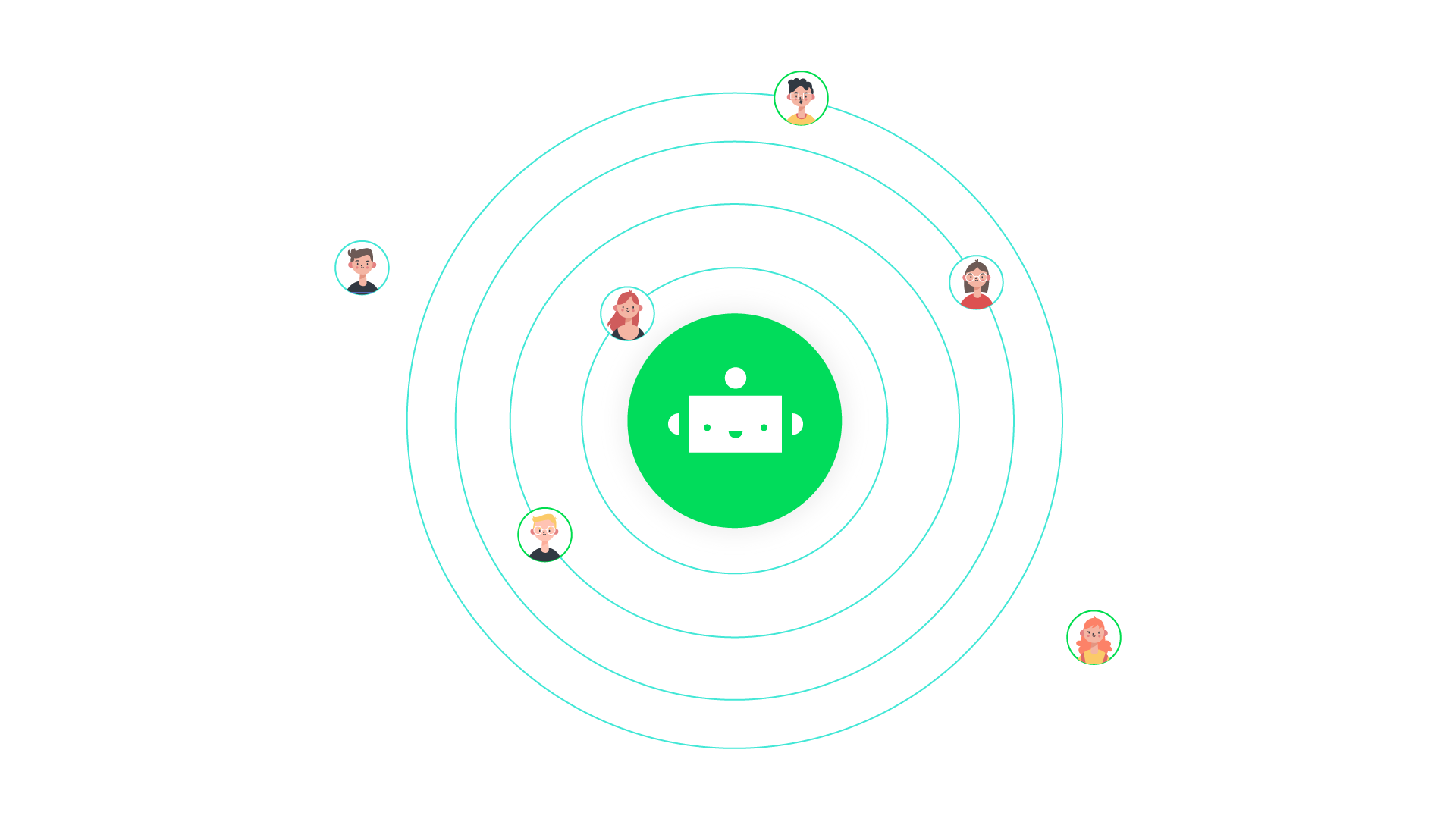Higher candidate volumes and less open positions require budget cuts, a shift in candidate management, and strategic growth plans.
 Everyone remembers the housing crisis of 2008 that brought on a global recession, unemployment levels soared, and the labor market started to favor employers over job seekers. Even though an economic crisis puts employers in a relative position of power, it also creates unique challenges such as a reduction in budgets for advertising and TA staff, and an increase in candidate volumes to process.
Everyone remembers the housing crisis of 2008 that brought on a global recession, unemployment levels soared, and the labor market started to favor employers over job seekers. Even though an economic crisis puts employers in a relative position of power, it also creates unique challenges such as a reduction in budgets for advertising and TA staff, and an increase in candidate volumes to process.
The past decade firmly landed us in “full employment” territory. It took about 3 years from the market crash for employment to return to healthy averages, and with it came a drastic shift in open positions. Some jobs no longer existed, while new highly technical and harder-to-hire-for openings became more popular. Recruiters adapted, investing in automation and AI technology to offer a seamless experience in a candidate-centric market. These days, candidates are once again calling the shots, and HR teams around the world are scrambling to meet the demands amongst cut-throat competition.
In today’s market, it’s relatively easy for people to find jobs, pushing the industry towards innovation and differentiation. In this context it’s important to remember that it is only a matter of time before the next recession hits. Hiring managers have to start thinking about how to use the tools at their disposal when times get tough.
Here are some general steps you can take to keep your TA operations running smoothly in the face of an economic slump.
1. Cost Cutting
When the economy tanks, it’s time to go into cost saving mode. This means cutting out non-essentials without compromising results and efficiency. Figuring out what to let go is easier said than done, so let’s break it down.

-
Reducing your tech budget: One of the healthiest cost reductions you can do is to get rid of tech you are not using. Take a critical look at your tech stack, find out which systems are being underutilized and consider a shift from large HRIS platforms to a more integrated tech stack. Maybe you purchased an expensive platform that promised to do it all, and it turns out implementation was less than expected — this is the time to scale down to a more nimble tech stack. Instead of owning a Workday or Successfactors, where every function is supported, you can opt to put together a set of tools by selecting the best of breed in each function. Yes, that means more integration work, but it’s cheaper, customizable, and more effective.
-
Recruiter headcount: This is an obvious one, if you’re cutting down volume of hiring by half, then you’ll often be asked to reduce your talent acquisition team headcount by half. But, here’s where it starts to get dicey, with half of your TA team, you won’t be as reactive to the needs of the organization as before. If a big ramp comes up, how will your team handle it? Usually, a staffing firm is called and HR departments end up spending more than if they had kept their original headcount. To protect your internal teams, it is therefore advisable to look at the historical spend with external staffing firms to avoid the mistakes of the past.
-
Whether you reduce the headcount internally, or externally, you will need to increase automation to handle future activity peaks. You can build a process that allows you to boost your recruitment activity 5X or even 10X without increasing TA headcount. You can rely on conversational AI to constantly build your talent pool, automatically engaging with your candidates. With your TA team spending the majority of its time chasing talent, answering questions and scheduling interviews, you know what you need to automate: FAQ’s, scheduling, and shortlisting. This lets your core (reduced) team focus on hiring and on-boarding candidates. Bottom line: before you let go anyone, make sure you’ve got your nimble tech stack figured out, so that automated workflows and chatbots can pick up the slack without costing you extra $$$.
-
Advertising: During a recession, your main problem won’t be attracting talent. It will be managing higher volumes of job seekers. In this context, it makes sense to get rid of some of the more expensive advertising options and instead lean on aggregate marketplaces. Facebook Jobs and Google Jobs don’t charge (for now), they can definitely build your talent pool at lower costs. Your ATS or CRM should allow you to post on them automatically and for free (if they don’t, maybe time to switch provider). On the other hand, if you focus on improving your response times, then your conversion rates will go up. A better candidate experience always means more hires, and better rates means you can probably get it done with less advertising budget.
-
Cut global spending (and ask the regions to carry more load): Increase each region’s accountability on TA spend by giving them more responsibility and freedom. By letting each country handle their own business, you can still do global cost-control, but increase productivity of each dollar spent.
-
Consider remote work: A recession is probably one of the best times to dip your toes into remote work practices within your TA team. Employees that work from home cost less in terms of facilities and office space and they’re more productive. People spend less time commuting and appreciate the flexibility in schedule. You can thus try to show a reduction in the total operational departmental cost without cutting headcount.
2. Handle more (traffic) with less (resources)
Even though the likelihood is that you’ll have reduced positions to offer in a time of recession, you will still need to be ready to absorb higher volumes when the market shifts. You’ll need to manage thousands of candidates applying to fewer openings, an increased workload in traditionally manual tasks such as keeping candidates informed. While you may simply default to sending a template message “if you haven’t heard from us in the next two weeks, please consider your application has been rejected” but that won’t endear you to candidates, and may negatively impact your employer brand in the long term. You can look at conversational AI technology to let candidates know upfront if they are shortlisted or not which will help you build trust in the talent pool, and reduce your cost per hire in the long term (more referrals, better word of mouth).
You’ll have more options from which to select the best possible talent, so make the best of it. Don’t let them slip through a poorly adapted process that misses the diamonds in the rough. To be able to keep up when you have 5x the volume and less recruiter time means you’ll need some kind of automation that eliminates 80%+ of candidates based on a set of criteria you set, without regressing to a poor candidate experience. Work with a system that automatically informs candidates when they’re not being shortlisted to maintain a positive brand experience. Automated responses can keep them informed of their status and answer FAQs. Strive to keep the level of engagement you’ve always had, showing all your candidates (even the rejected ones) that you care about them and be one of the few employers that tracks candidate satisfaction (via NPS score for example) .
 Be smart about using the tools born out of the last recession or you might find yourself with hundreds of applicants and rising costs per hire as well as increasing time to fill.
Be smart about using the tools born out of the last recession or you might find yourself with hundreds of applicants and rising costs per hire as well as increasing time to fill.
3. Use the downtime to prepare for the next phase of growth:
As we saw in the past, a recession can completely change a recruitment landscape. Several job functions became obsolete, candidates changed their expectations, becoming active consumers of the employer brands.
 Recessions usually correlate with less employee churn, less growth, and therefore less recruitment work in general. Use this time to structure your workflows to be ready when the economy heats up again. Map out a fool-proof recruiting sequence, where every stage is automated, candidates are never in limbo, and your team knows exactly what their next step is across the funnel.
Recessions usually correlate with less employee churn, less growth, and therefore less recruitment work in general. Use this time to structure your workflows to be ready when the economy heats up again. Map out a fool-proof recruiting sequence, where every stage is automated, candidates are never in limbo, and your team knows exactly what their next step is across the funnel.
Maybe you’ve got a few side projects you haven’t been able to flush out. Here are some improvement projects you could take on during your downtime:
-
Still using paper applications and forms? Digitize the candidate experience in your recruitment center (check out our Welcome Center for example)
-
Activate Facebook Jobs as a sourcing channel (its free and it works great for high volume entry level positions)
-
Help your recruiters with automated calendaring (use can use Calendly for example)
-
Train your recruiters on the latest in technology: RPA, automated assessments, screening tools.(e.g. UiPath offers some free courses)
-
First impressions last: redecorate your recruitment center with plants and new reading material
-
Analyze hiring patterns in your recruitment team to identify potential recruiter biases (and initiate a training to help them identify their own biases)
-
Analyze and reevaluate your advertising channel performance — maybe (lets be honest: probably) buy ads on Monster isn’t as effective as it was 3 years ago?
-
Rethink the way you work. Would a remote model work better? Analyze where your team is based and see if there are changes worth making.
The economy is cyclical. We can’t prevent the next recession, but we can prevent how hard it hits our recruitment operations, and how fast we get back up after it does. Look at a recession as an opportunity, seize the moment, be prepared, and you will be in a great position come out on top on the other side.
👉👉👉 Want some help planning for the next recession? Schedule a call with us to discuss how Talkpush automation can help you cut down costs while processing more candidates, faster! 🚀



